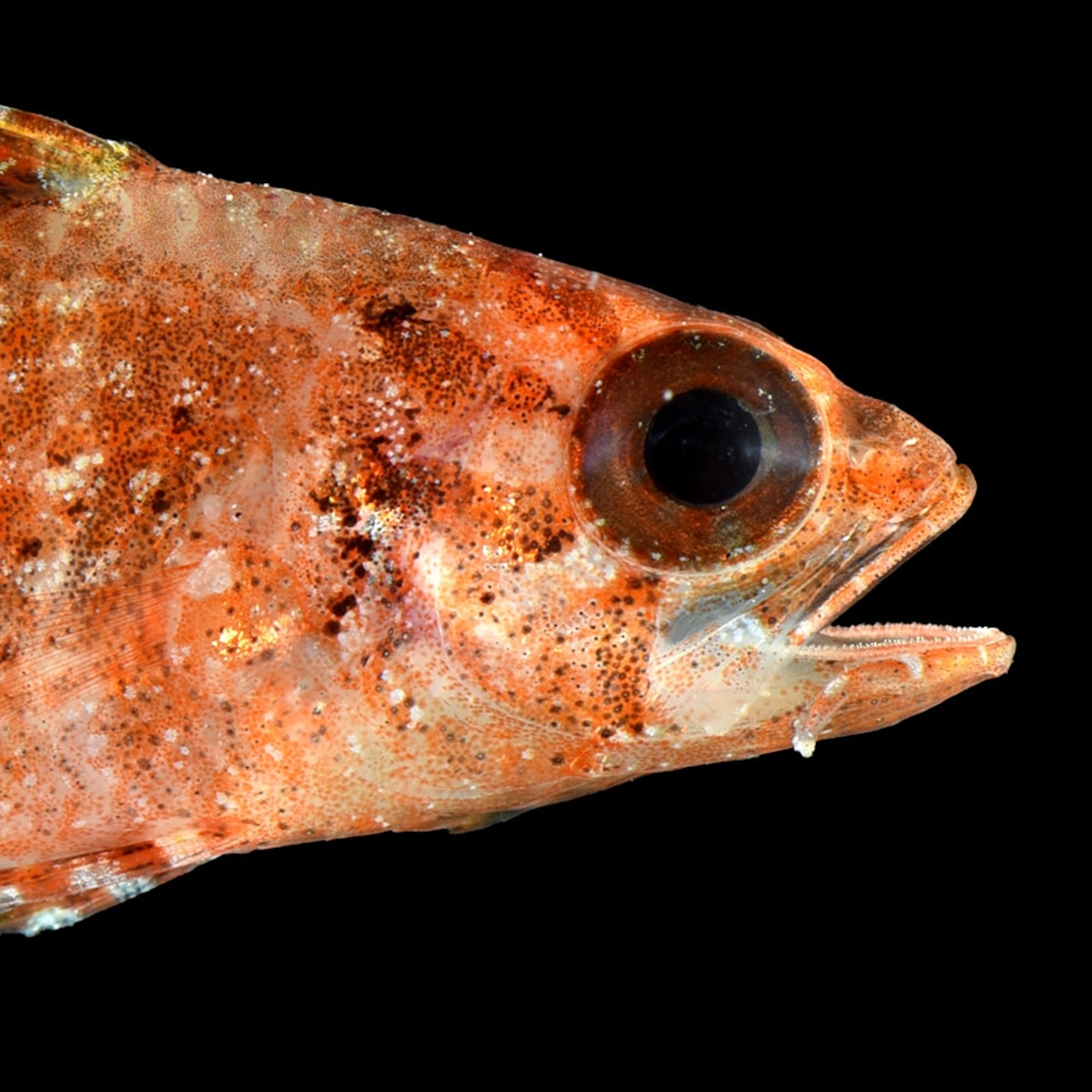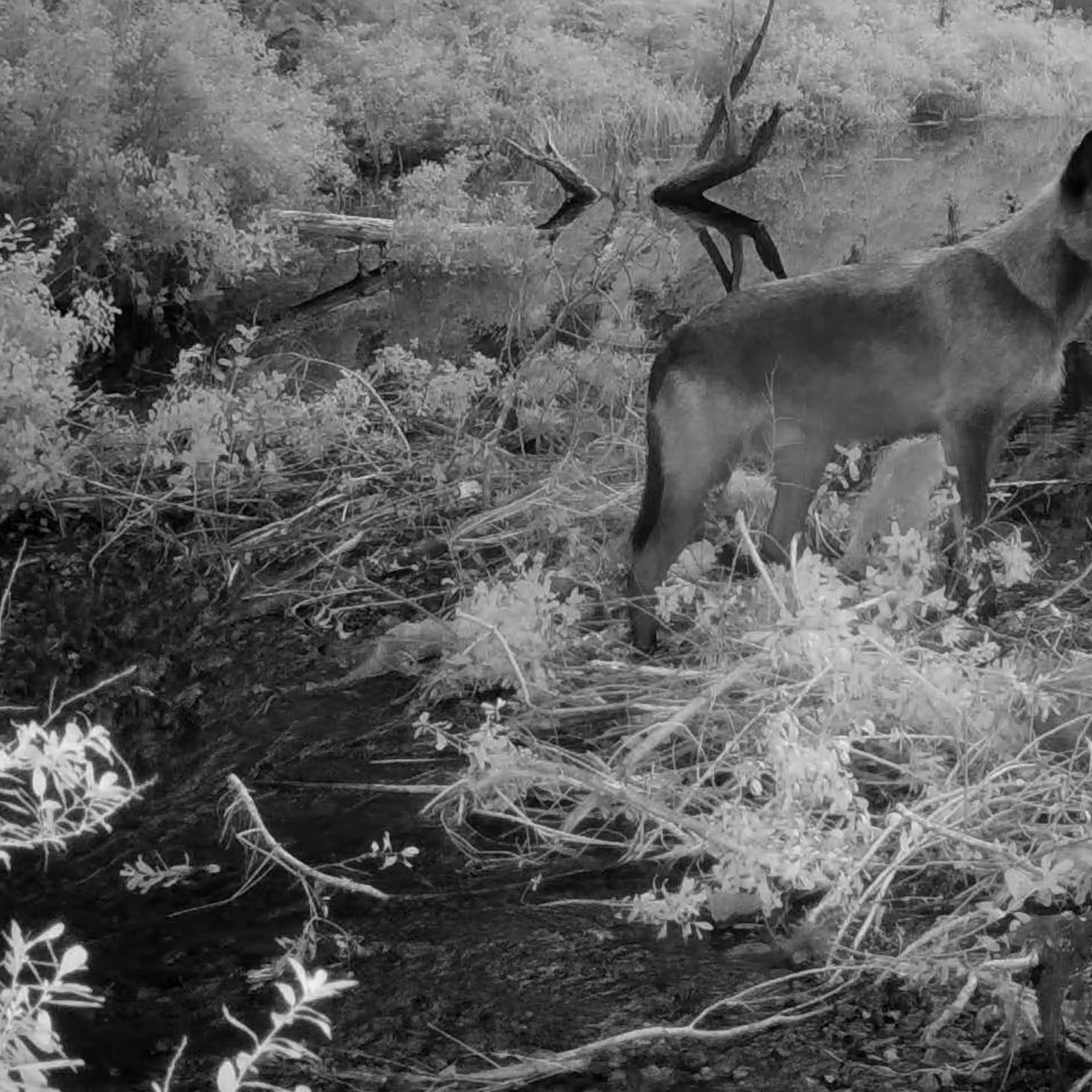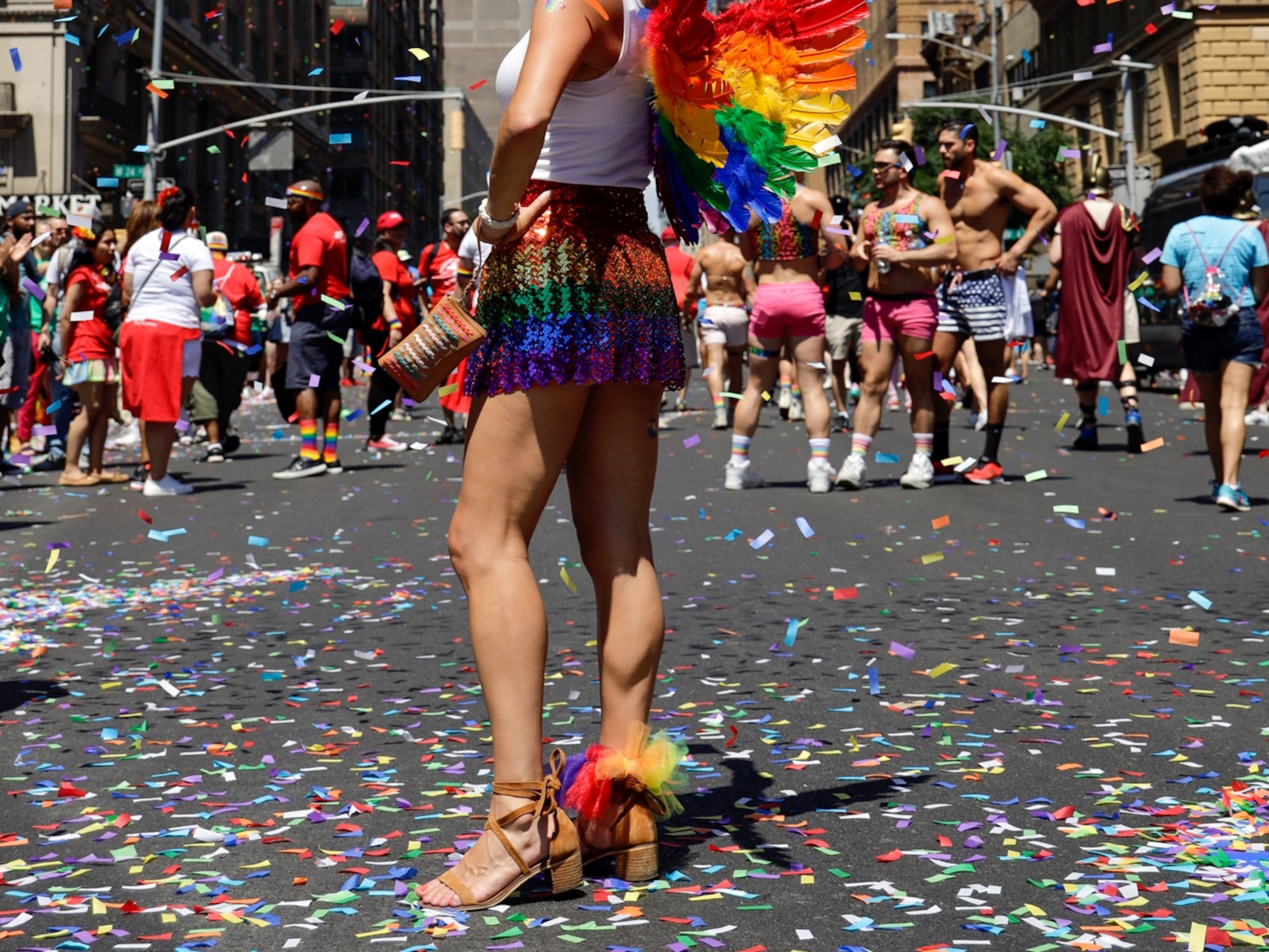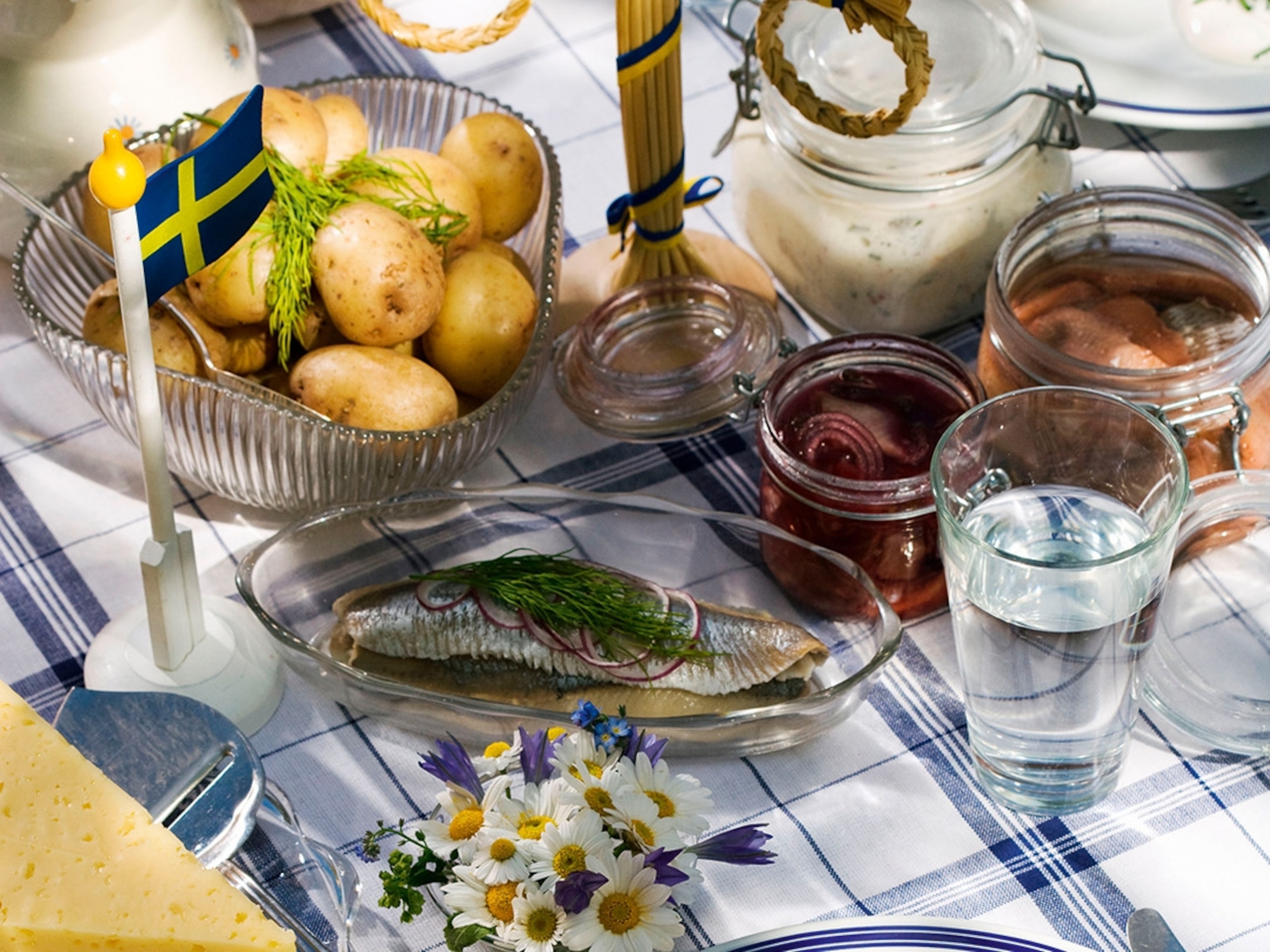
Consider the Soft-Shell Crab
Consider the blue crab. I never had.
It was early morning the first weekend of summer. I rolled over in my sleeping bag. The wind whirled outside and threatened to dislodge my tent and toss me in the water. My hair smelled scorched, infused with the essence of burning logs, salted smoke, sea spray, and it—the blue crab.
I was on a thin finger of land stretching down the coast of North Carolina, flanked on both sides by water—the Atlantic Ocean on one side, and three sounds on the other. The Outer Banks. A series of wavering barrier islands, you get the feeling that nothing is permanent here. The sand slouches forward. The water pools in and withdraws. White dunes grow then dissolve.
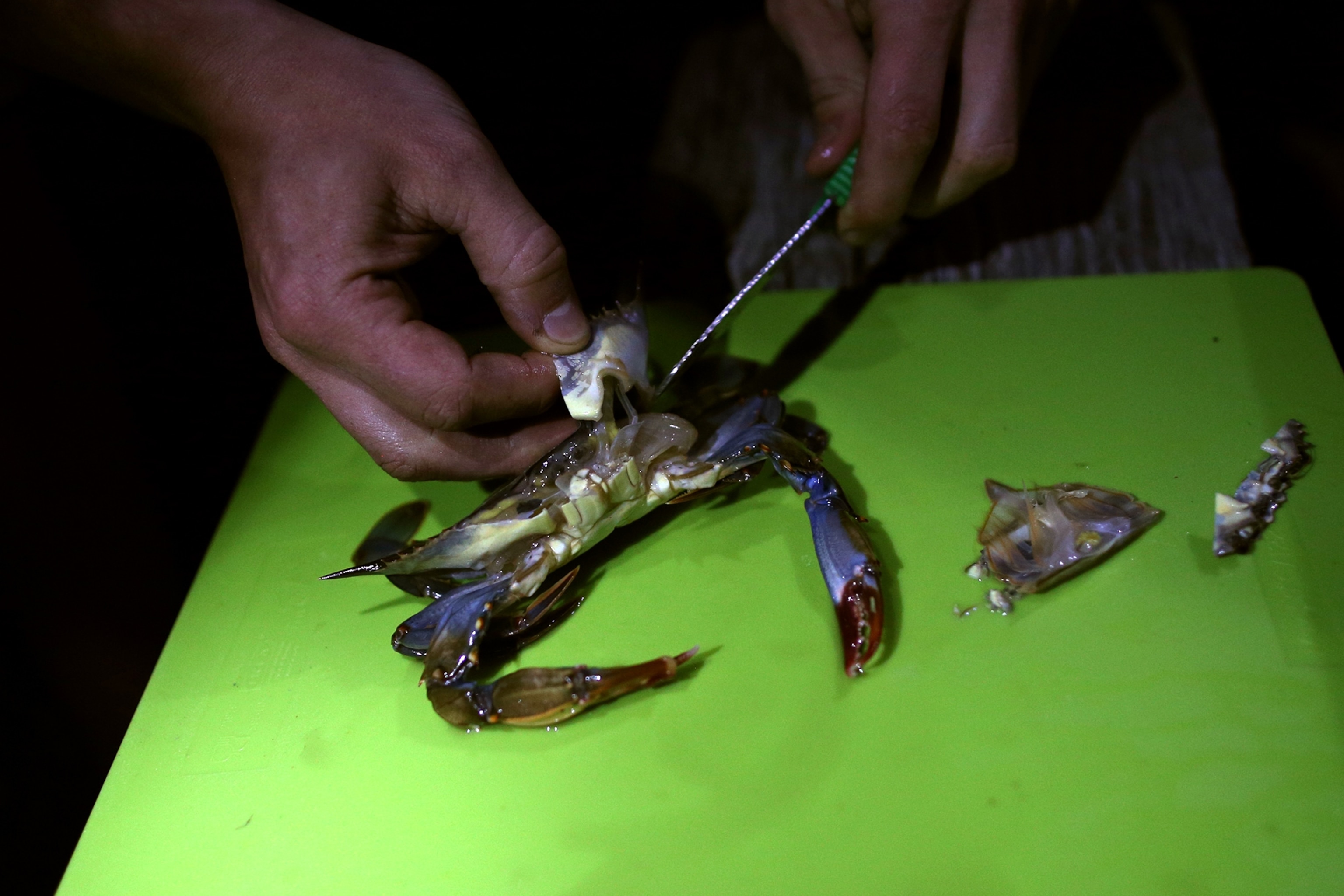
The blue crab or “beautiful, savory swimmer” is so named for its striking blue claws. The female blue crab is differentiated by her lady-like red-tipped pinchers. She can be found floating in the waters of the Atlantic Ocean or scuttling through salt marshes as far north as Nova Scotia and as far south as Argentina.
She is especially sought after between the months of May and September. This is when the blue crab sheds her hard exoskeleton to reveal a soft shell. She now can be eaten whole. She shows up on the menus of hot New York restaurants, is featured in boils in Maryland, and is deep fried in the South.
A day earlier, I made it my mission to explore. I wanted to fish. I set on my way in my car, rented a pole, and rolled my cooler out onto a pier. I cast my line out into the ocean and waited. The sun felt warm and pleasant on my skin under the cloudless sky. Children skipped across the beach below dotted by yellow and orange umbrellas. The tide rolled in and out beneath the wooden pegs of the pier. I waited.
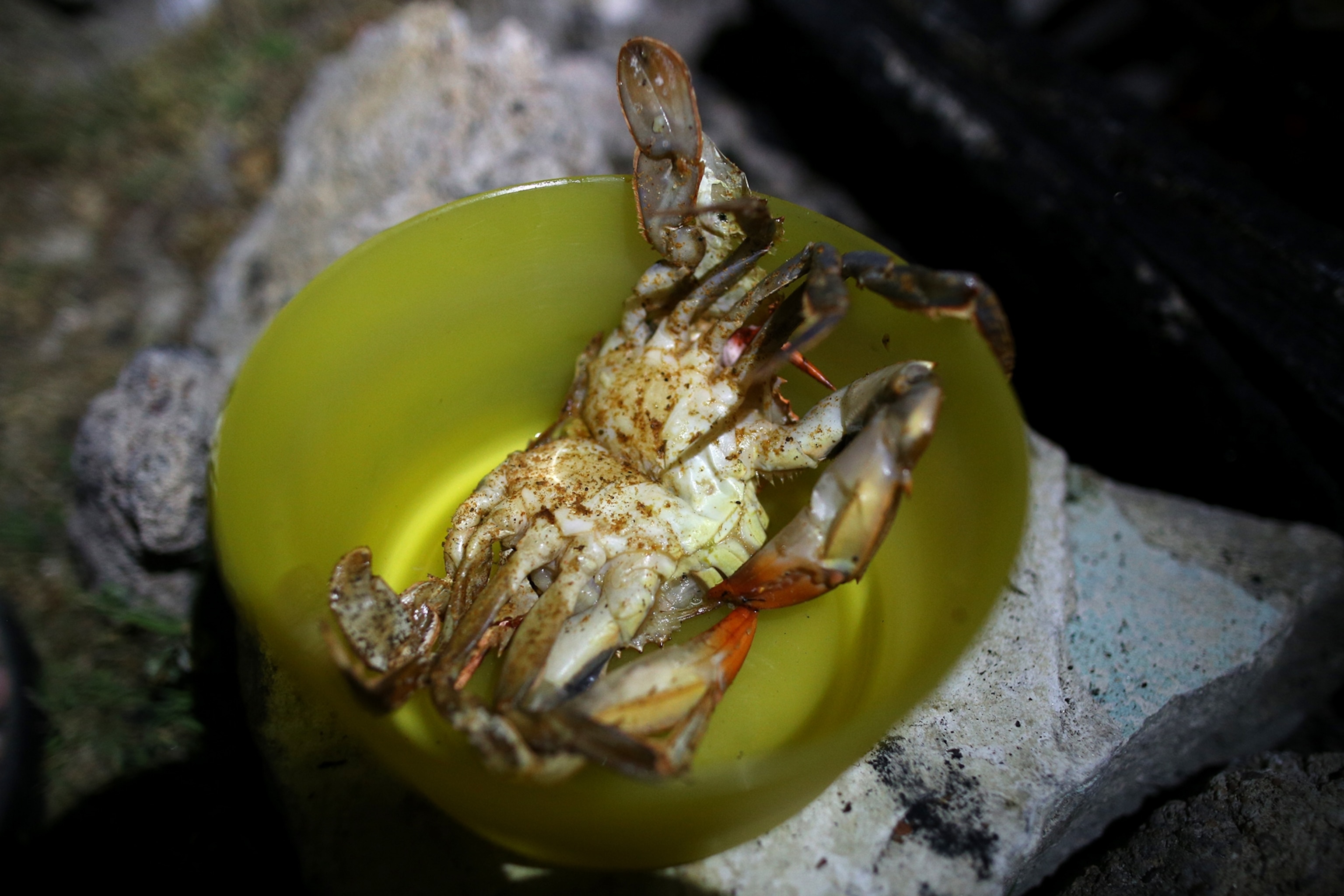
“Catch anything?” asked a round, weathered man, probably 50. I said I hadn’t. “Why are you holding the pole that way?” I looked at him. “Let me show you how.”
He instinctively took the pole from me. “Like this,” he said. The hook and line went sailing over the rails again in what looked like a perfect cast. “Thanks,” I said. “No one has caught anything today,” he said, a Southern twang revealing itself, “don’t worry.”
About four hours later I packed up my cooler and wheeled off the pier.
“Catch anything?” asked one of the pier attendants.
“No.”
I wasn’t fishing for crabs, but I was certainly angling to eat a few, so I asked around and a local pointed me to a seafood shop a few miles north.
It is May, the waters are warm and it is time for the blue crab to molt. She must molt in order to grow. A female crab will molt between 18 and 23 times before she is ready to mate and spread her own small family of two million larvae into the briny water. She will mate only once.
In the small seafood shop, customer after customer stepped up to order shrimp by the pound. I peered around inside, searching for the blue-clawed crab. I asked for six and out I walked across the lot to the fresh produce stand to pick up some Carolina-grown strawberries, and corn for the grill.
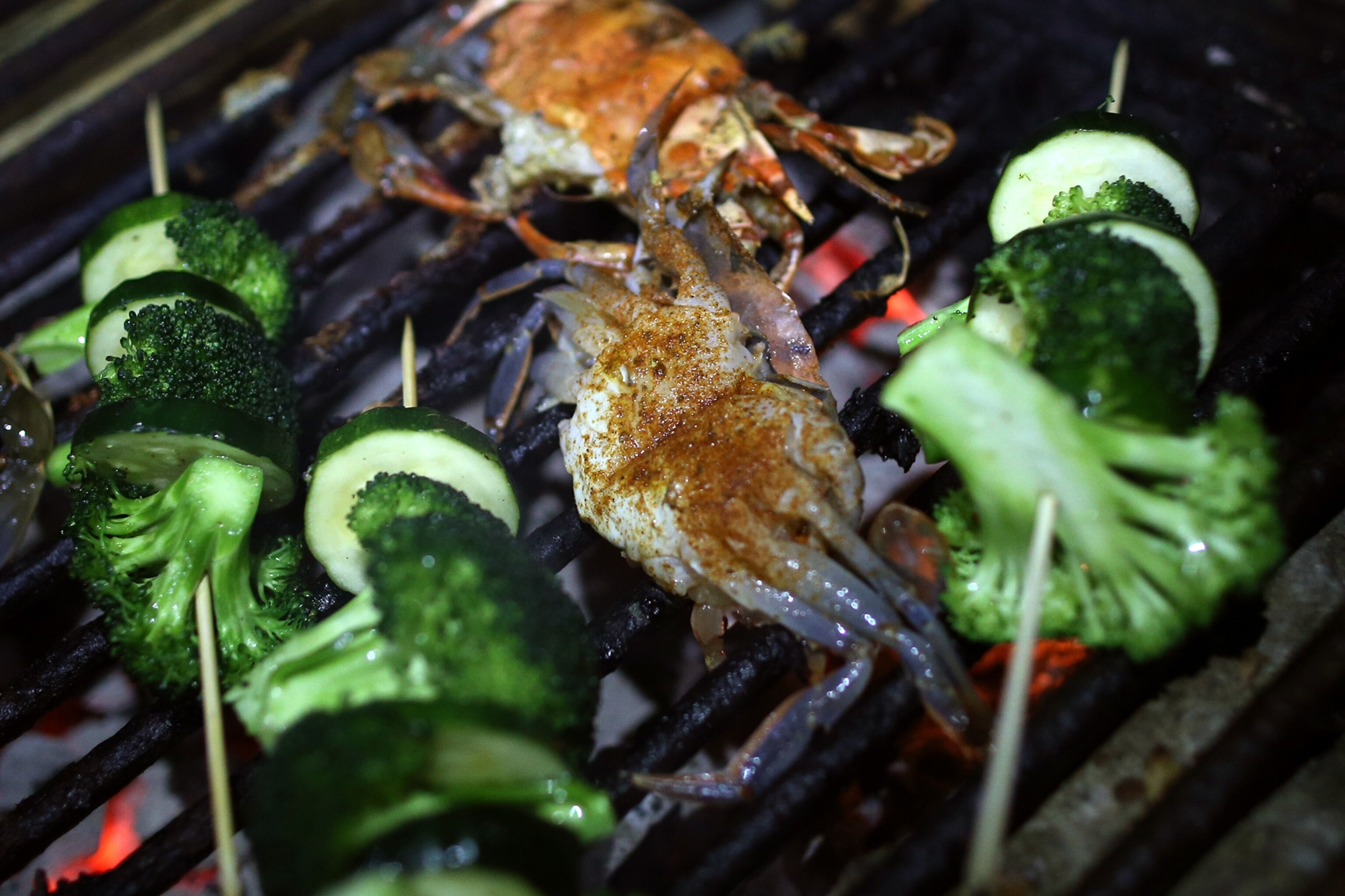
“What’s the best way to cook these?” I asked the cashier, holding up the bag of crabs.
“Fry them,” said man behind the cashier without hesitation.
“Fry them?” I asked.
“Yes,” he said, “you can eat the whole thing.” Get some mix at the store, throw them in and fry them up. That’s the best way.” The cashier nodded in agreement.
“Are they cleaned?” asked the man. My raised eyebrow triggered his response. He took the bag of crabs from my hand.
“Let me show you how.” He gestured with two fingers. “First you cut the face.”
Cut the face? Cut the face? I certainly could not cut the face of anything.
“You cut off the eyes and mouth like this, then you remove the lungs and flip up this part right here he said pointing to the crab’s apron.” The cashier threw in a pair of gloves gratis. “It’s easier this way,” she said.
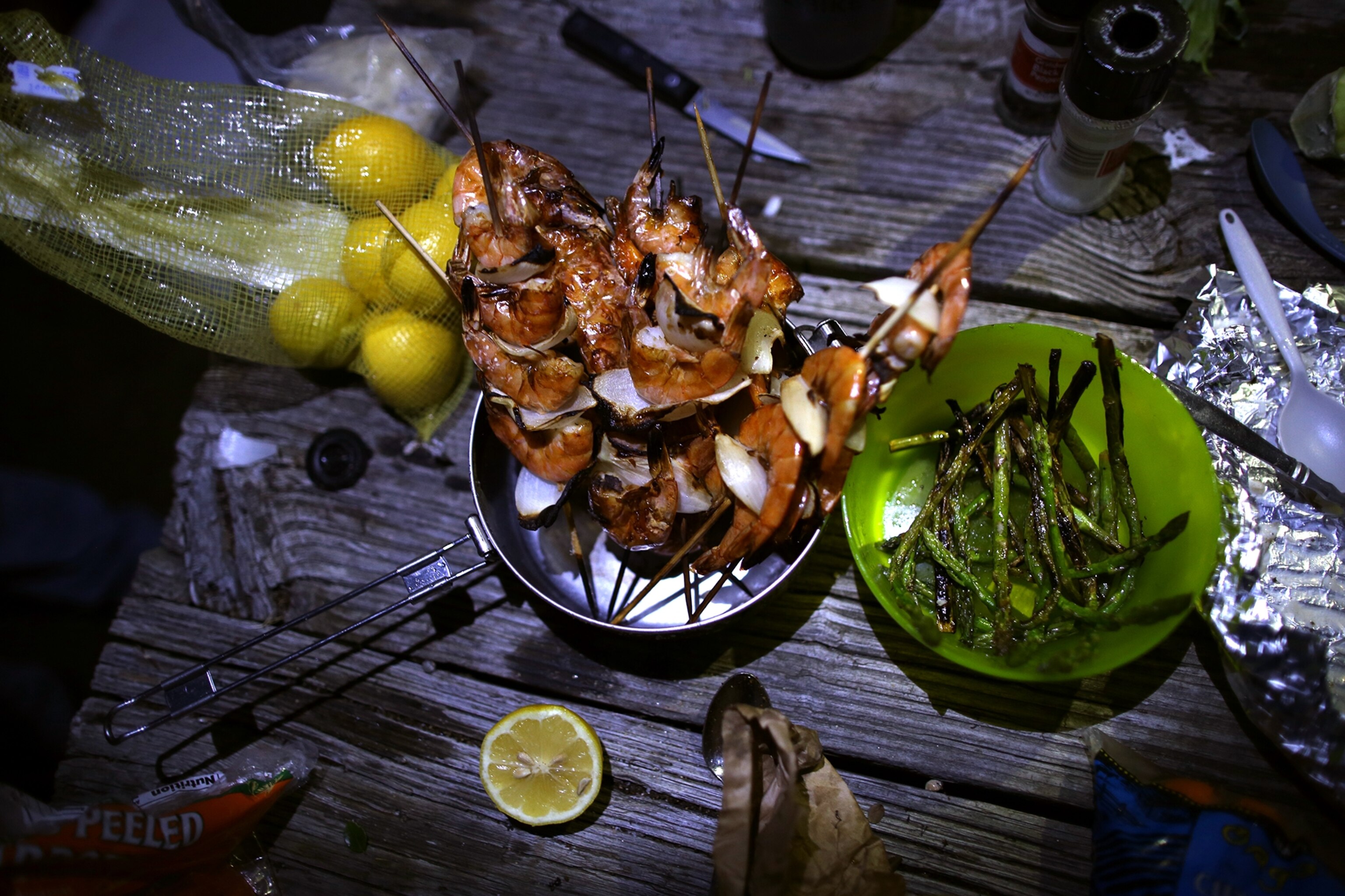
The crabs were soft and papery. They sat docile staring back with glassy little beads atop their wavering eyestalks, legs kicking every few minutes or so.
Cut the face. Whose job was it going to be? “I just can’t do it,” I said as we all began preparing dinner at the campground. Luckily, someone eagerly volunteered himself. After we had all gazed with amusement and passed around the soft-clawed crabs, he took out a knife.
“Well, after you get through the first two, you’re—” he trailed off. “Desensitized?” I asked. “Yeah.”
The blue crab is an opportunistic feeder. She has a reputation for being aggressive, devouring fish, clams, and even other crabs. She mates in the spring while she is soft and vulnerable. Her mate will carry her until she is strong enough to survive on her own. Of her two million eggs, only one per million will become adult crabs.
At the end of our seafood feast of fish and shrimp kebab was the hero crab turning red over the flames of the grill. After being cleaned, the crabs were lightly dusted with faithful Old Bay and a drizzle of oil and cooked a few minutes per side.
Everything tastes better outside. This is absolutely true. There is something about sitting around a campfire and eating with your fingers, taking in the wet salty air, and eating under starlight. You are in nature and it in you.
We looked at each other as the first crab came off the grill. I was to go first, incredulous still that you could eat something like this, this crab, whole. I took a bite. It was a burst of hot, juicy tender meat that was sweet and briny. It tasted like a bite of the ocean. It needed nothing else. No fancy sandwich or sauce. It was to be enjoyed simply in all its glory, outside, where nature intended.
This story is part of National Geographic’s special eight-month Future of Food series.


